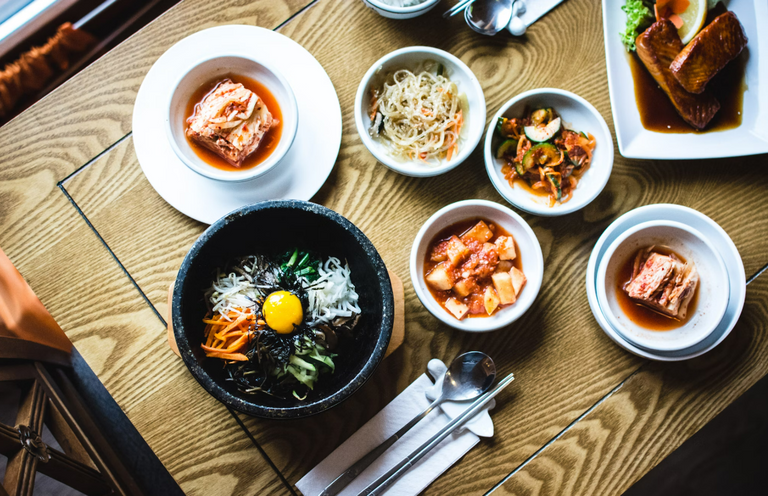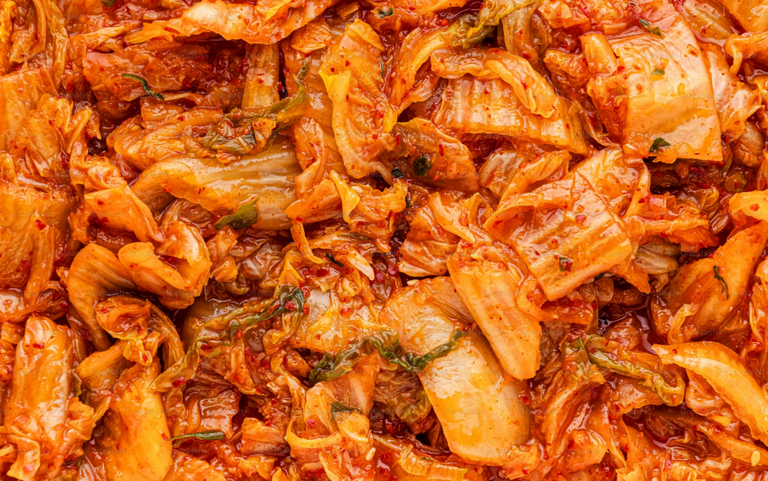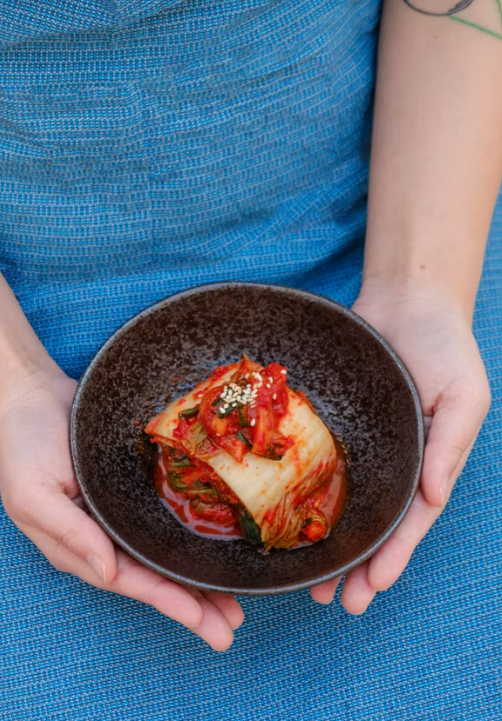Ingredients:
For the Vegetables:
- Napa cabbage (Chinese cabbage): 1 large (about 3–4 lbs)
- Korean radish (or daikon): 1 medium, julienned
- Green onions: 4–6 stalks, cut into 2-inch pieces
For the Salt Brine:
- Coarse sea salt or kosher salt: ½ cup
- Water: 4–5 cups
For the Kimchi Paste:
- Garlic: 6–8 cloves, minced
- Ginger: 1-inch piece, minced
- Fish sauce (or soy sauce for vegetarian): 2–3 tbsp
- Korean chili flakes (gochugaru): ¼–½ cup (adjust based on spice preference)
- Sugar: 1–2 tsp
- Water: 3 tbsp
- Optional: 1 small apple or pear, finely grated (adds natural sweetness)
Tools Needed:
- Large mixing bowl
- Colander
- Gloves (to protect your hands from the chili paste)
- Airtight jars or fermentation containers
Step-by-Step Instructions:
Step 1: Prep the Napa Cabbage
- Cut the cabbage into quarters lengthwise, then chop each quarter into 2-inch pieces.
- Place the cabbage pieces in a large mixing bowl and sprinkle them with coarse salt. Gently massage the salt into the cabbage leaves to help them release water.
- Pour enough water into the bowl to cover the cabbage and let it sit for 2–3 hours, tossing occasionally. The cabbage should wilt and become soft.
Step 2: Rinse and Drain
- After brining, rinse the cabbage thoroughly in cold water 2–3 times to remove excess salt.
- Drain the cabbage in a colander for 20–30 minutes.
Step 3: Prepare the Kimchi Paste
- In a small bowl, combine minced garlic, ginger, fish sauce, sugar, and gochugaru (Korean chili flakes). Add water to make a thick paste.
- For sweetness, mix in grated apple or pear.
Step 4: Combine the Vegetables
- In a large mixing bowl, add the drained cabbage, julienned radish, and green onions.
- Put on gloves and use your hands to coat the vegetables evenly with the kimchi paste. Make sure every piece of cabbage is coated.
Step 5: Pack the Kimchi
- Pack the kimchi tightly into sterilized jars or fermentation containers, pressing down to remove air pockets. Leave about 1–2 inches of space at the top for the kimchi to expand as it ferments.
- Seal the jars loosely to allow gases to escape during fermentation.
Step 6: Ferment
- Leave the jars at room temperature for 1–3 days to ferment. Taste it daily to check its flavor.
- Once it’s tangy and fermented to your liking, transfer the jars to the refrigerator to slow down fermentation. Kimchi can last for weeks to months in the fridge.
Tips for Success:
- Choose the right chili flakes: Korean gochugaru is key to authentic flavor and heat. Don’t substitute with regular chili powder.
- Adjust spice levels: If you prefer mild kimchi, use less gochugaru or mix it with paprika.
- Keep it submerged: Ensure all vegetables are submerged in the liquid to avoid spoilage.
- Experiment with add-ins: You can add carrots, Asian chives, or even small salted shrimp for variety.



